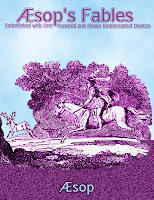Reference > Handbooks & Manuals > Archaeology
Description
by James W. Cambron and David C. HulsePREFACE
For many years there has been a need in the Southeast for a workable system of projectile point classification. Any number of people working in archaeology have attempted various taxonomic schemes from time to time in response to this long felt need. In the past, most of these systems of classification have been based on certain look-alike characteristics, with an utter disregard for the cultural provenience of the objects being classified. Archaeology has been reasonably successful in its classification of pottery. Great progress has been made during the past three decades in unravelling the prehistory of the various ceramic cultures in our area. During this same period, however, very little has been ascertained about the several thousand years of pre-ceramic occupations of which the major cultural determinants and diagnostic traits are stone implements, chiefly projectile points of flint.
Tom and Madeline Kneberg Lewis, with the help of interested amateurs within the Tennessee Valley, took the first steps in the ordering of projectile points and other flint artifacts and made plans for the publication of a point type handbook. The retirement in 1961 of Tom and Madeline Lewis halted this project. James W. Cambron, a collaborator and chief contributor to the Lewises' proposed publication, continued his interest and undertook, with the help of David Hulse, the job of producing this handbook.
We have had the pleasure during the past of working very closely with Cambron and Hulse. We have observed how painstaking and careful they are in their evaluations and how they have often refused to place a specimen in a type if all the type attributes were not present. We have also observed in the course of field investigation that, as a result of this taxonomic system, the occurrence of certain types in certain cultural contexts could be predicted with a high degree of accuracy. In other words, this taxonomic system not only allows communication between workers by supplying names for certain classes of artifacts, but it also enables the prehistorian to establish event which took place in time and space. This, after all, is the real test of any artifact taxonomy.
In all systems of taxonomy, whether it is the naming and classifying of cave beetles, land snails, snakes, or arrowheads, there are two schools of thought. These can be termed the "splitters" and the "lumpers," and if we might classify ourself without splitting or lumping we would type ourself as a "lumper." However, we are thankful that the authors would be typed as "splitters," because without meticulous splitting, lumping or meaningful generalization would be impossible. This is the reason we have been tolerant of the fine divisions and the hairline cases which have often made variants of what looked like to us one and the same type. Like all such systems, this one has its limitations. We do feel, however, that it is a practical classification system which has already demonstrated its usefulness in archaeological interpretations.






 "
"





 7:22 PM
7:22 PM
 BookNet
BookNet


 Posted in:
Posted in: 











0 ความคิดเห็น:
Post a Comment